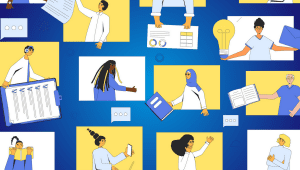
How to Scale Learning at Organizations of Any Size
Leaders often feel overwhelmed with training options. Here’s how to really scale learning, according to neuroscience.
Thank you for searching the NeuroLeadership Institute archives. Here’s what we were able to find for you.
Still having difficulty finding what you’re looking for? Contact us.

Leaders often feel overwhelmed with training options. Here’s how to really scale learning, according to neuroscience.
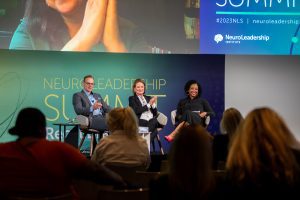
Explore key insights and coverage from the 2023 NeuroLeadership Summit in our comprehensive write-up. On-demand recordings available now.
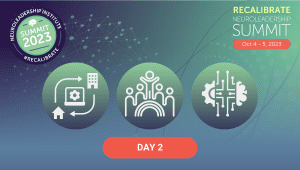
Day 2 of the 2023 NeuroLeadership Summit featured conversations around the future of AI, neurodiversity, the need for reskilling, and more.
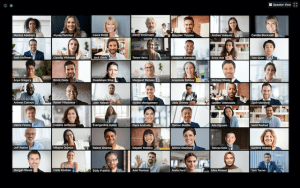
One prevailing debate around remote and hybrid work is that virtual work is necessarily WORSE than any in-person work. But this doesn’t have to be true. Much can be achieved virtually. Here’s a road map.

With our opportunities for face-to-face interaction virtually nil, organizations have to rethink learning—and that’s a good thing.

By understanding and employing the science of spacing, we can tweak programs to make a dramatic difference in the impact of learning.

As coronavirus cases and deaths spiked around the world, so did an equally pervasive, but less observable ailment—anxiety. The effects of anxiety—reduced productivity and a lack of focus to name just two—have been felt widely among the global workforce, causing leaders to rightly ask, What can be done to stem the tide and restore calm to employees? We asked the same question. Specifically, we asked a host of questions of 688 survey participants and reviewed the relevant scientific literature. Through our research, we sought to understand the extent of the pandemic’s rippling cognitive and emotional effects and what leaders can do to alleviate them, cultivate well being, and instill confidence in their workforces. Our findings are compiled in our recent Idea Report, “The Mind in Crisis: Understanding employees’ needs in a changed workplace.” Among the most interesting and important findings is that employees who felt they were part of a team were significantly less anxious than those who didn’t. Moreover, there are things leaders can do to cultivate that camaraderie and reduce anxiety. Here’s how. The science and power of relatedness To feel a part of a team is to feel valued and heard, or in a word, included. At NLI, we use the SCARF® model, which defines five key domains of social threat and reward (Status, Certainty, Autonomy, Relatedness, and Fairness), to understand how we can intentionally include others on a daily basis. Specifically, we can understand the feeling of being part of a team through the lens of relatedness. Relatedness is our innate need to belong to groups that offer us safety, shelter, and acceptance, and it’s been shown to be an important factor of a person’s ability to thrive, both in general and in the workplace, especially in times of crisis. We all know this intuitively from experience—humans have a natural reflex action to come together in a crisis. When we gather with friends and family in the wake of a crisis, we balance out the lack of certainty and feelings of having no control with the reward of being with others we trust. We create relatedness. We face a crisis now, but our physical isolation from other people may threaten our basic need for belonging and companionship, depriving us of our relatedness and exacerbating our anxiety. Therefore, cultivating a sense of organizational and interpersonal connectedness is crucial to helping your remote employees feel less isolated and less anxious. Organizations can cultivate relatedness by holding online all-hands meetings, or regular virtual morning coffee breaks or happy hours, where people stop work and just chat for 30 minutes. At a firm NLI partners with, people are creating relatedness by encouraging folks to change their backgrounds when on video, and then sharing what their background means to them—perhaps a photo from a vacation, or just a beautiful scene. Try this at 4:45 pm every day: Invite your team to a virtual group hangout to share what they have made progress on. Learn more This is just one of the findings of our latest research on the effects of the pandemic. Read about the other insights from NLI’s Idea Report, “The Mind in Crisis: Understanding employees’ needs in a changed workplace,” by clicking the link below and grabbing your copy today. [action hash= “638a5f77-c66e-49e6-b610-592c6dc17ae6”]

Stress can be thought of simply as heightened attention to the negative. Using a growth mindset can help with reducing stress in the moment.

With the world on lockdown, organizations everywhere have had to rethink how they operate. But in the midst of the crisis, some have discovered something unexpected: productivity has gone up, not down. A crisis like a global pandemic naturally triggers extreme anxiety and stress, but it also unleashes tremendous energy and motivation. If leaders keep threat levels low, they can harness that sense of urgency to achieve work results that would normally seem impossible.

At the 2019 NeuroLeadership Summit, we caught up with psychologist Dr. Valerie Purdie Greenaway to discuss what it looks like to scale social learning.

Deb Bubb, IBM’s Chief Leadership and Learning Officer, believes the AI revolution doesn’t necessarily mean job loss, just a great need for reskilling.

Meaningful learning can’t occur when our brains are flooded with information. That’s why creating coherence in corporate learning content is so important.

The AGES Model helps organizations take a new approach to learning efforts, turning mandatory events into meaningful experiences.

Research shows some leaders take growth mindset and run in all sorts of directions with it. To understand why, we can look to the science of learning.

The beloved author H.P. Lovecraft has been famously quoted as saying that “the oldest and strongest emotion of mankind is fear, and the oldest and strongest kind of fear is fear of the unknown.” Lovecraft was no neuroscientist or business expert, but in this era of constant change, his sentiment rings true. Organizations face technological advances like never before, creating an ever-growing gap between existing and required skills. At NLI, we believe even the most fearful leader can take solace in the science of perspective-taking, insight, and effective execution, in order to lead a transformation in their organization. Here are three brain-based strategies all leaders can employ. [action hash=”1c967ecd-f614-4b3d-a6f1-a14c6ec523bc”] 1) Use SCARF® to practice perspective-taking Taking others’ perspectives offers many benefits, including seeing new possibilities with clients, colleagues, and even competitors. Perspective-taking facilitates social understanding and increases willingness to engage with others, build relationships, increases perceived leadership capability, and decreases stereotyping. Perspective-taking hinges on three processes: understanding that others possess mental states, realizing those mental states are not identical to our own, and overcoming the self-focused bias of our own perspective. Leaders can use the SCARF® Model — a way of grouping five domains of social threat and reward — to facilitate understanding of others’ motivation and social behavior. Specifically, they should explicitly ask for others’ perspectives, consciously take the perspective of those they seek to understand, and purposefully set aside time to practice. 2) Accelerate breakthroughs by creating the conditions for insight Innovation requires creative thinking, which neuroscience research suggests often derives from moments of insight. Research also shows that there is a reliable series of events that precede emergence of an insight — meaning that it’s not random; it follows a process. Threat and noise reduce the likelihood of insight generation, while a positive mood and relaxed state increase the chance of insight. Leaders can approach team processes with insight in mind by noticing when people tend to have the deepest insights and creating those conditions in daily processes. For example, leaving mornings — when people tend to have the most insights — free for private, quiet work. And allow people to have a few quiet minutes to reflect during a meeting rather than all working aloud. 3) Create extreme clarity for faster execution Uncertainty creates threat, flatlines creativity, impairs decision making, and ultimately diminishes productivity. When people feel threatened, their instinct is to be as careful as possible, often to the point of excess. For instance, role uncertainty breeds indecision and a pathological need for consensus to ensure that everyone is in agreement, which impedes swift progress. To mitigate threat and promote efficiency, leaders should create extreme clarity and set clear expectations in the areas that matter most. These include roles, process, and determining what “good” looks like. Creating extreme clarity in all five SCARFⓇ domains generates a sense of perceived control, which is fundamentally rewarding. Individuals and teams are more motivated to work together and accomplish goals with alacrity through transformation. Indeed, approaching transformation with the right strategies is like folding a paper airplane. Done right, you can make that flat piece of paper soar. [action hash=”1c967ecd-f614-4b3d-a6f1-a14c6ec523bc”]

When collecting data on learning sessions, the net promoter score is the default for many organizations. But there are numerous flaws with the approach.
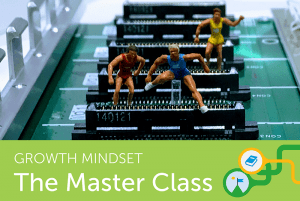
By now, most leaders understand that organizational growth mindset is a transformative tool for talent development. The belief that others can develop their abilities — and the ability to help them do so — are powerful ways to help employees become more resilient, more nimble, and more innovative. But actually putting all that into practice within an organization is more difficult than it sounds. As we recently learned in our industry research project — an endeavor we captured in a new white paper, “Growth Mindset Culture” — leaders are finding that two main obstacles keep getting in the way. Here’s what they’re about and how to address them. Obstacle #1: An imperfect understanding of growth mindset When it comes to cultivating growth mindset within an organization, it’s not enough for leaders to simply tell employees to have a growth mindset. Nor should leaders simply declare that they themselves have a growth mindset when the reality is that many leaders don’t fully understand it. For leaders to really embody growth mindset, they need to ask themselves: Do they truly believe in their own need to grow, and not just that of their employees? The best way to promote growth mindset throughout an organization, we’ve found, is for leaders to embody growth mindset themselves. Our research showed that leadership buy-in was critical for the success of growth-mindset initiatives. To assess their own understanding, leaders should ask themselves three questions: Do I believe that everyone in their organization has the capacity to grow? Do I believe there’s talent everywhere in the organization — talent that should be fostered and acknowledged as it emerges? Am I open about my own mistakes, and the lessons I draw from those mistakes? Only when leaders understand these principles fully, deeply, and accurately can they truly serve as models of growth mindset for their employees. Obstacle #2: Policies that don’t reflect a true commitment to growth Once leaders begin to master the principles of growth mindset, they can turn their attention to disseminating it throughout the organization. But fostering a culture of growth mindset requires more than just sending out a few emails or running a training workshop. It also means revising practices, policies, and systems throughout the organization to make sure they value not just performance, but learning, growth, and progress over time. Unfortunately, many organizations that claim to value growth mindset treat their employees in a way that doesn’t value their growth — for instance, firing an employee who makes a mistake rather than treating it as an opportunity to learn and grow. When this happens, it signals that the organization may be overvaluing performance relative to growth. The key to creating a supportive environment is communication. Employees and managers should speak frequently in a constructive evaluation process. They should discuss what they’re really happy with, what can still be improved, and how to collaborate on getting there. Ultimately, organizations that truly care about employees’ growth and development know that making mistakes is inevitable — and they foster an environment where mistakes are seen not as indictments of worth or ability, but as opportunities for growth and improvement. This article is the ninth installment in NLI’s new series, Growth Mindset: The Master Class, a 12-week campaign to help leaders see how the world’s largest organizations are putting growth mindset to use.

Author and professional poker player Maria Konnikova explained at this year’s NeuroLeadership Summit how leaders can make smarter decisions.

When Peter Mende-Siedlecki was visiting a loved one in the hospital recently, he noticed something strange by the person’s bed. It was a set of statements, designed to remind the hospital staff of three things. “Please call me _____.” “What I would like you to know about me is _____.” “What I value/love most is _____.” For Mende-Siedlecki, a psychologist at the University of Delaware who’s spent a career studying empathy and spoke at this year’s NeuroLeadership Summit, this was a fantastic discovery. In just three prompts, the hospital engaged in expert individuation, or the psychological practice of seeing people as unique, distinct beings. We can think of it as the opposite of stereotyping. In the workplace, individuation matters because empathy matters. Every day, teams collaborate based on overlapping strengths and weaknesses, constantly keeping others in mind. We sense people’s needs, they sense ours, and everyone adjusts accordingly. The trouble is, science has repeatedly shown that empathy is a scarce resource; our brains don’t want to spend it willy-nilly. This leads to unfortunate observations like “One death is a tragedy, but a million deaths is a statistic,” and the all-too-human habit of “compassion collapse” in the face of mass tragedy, where the brain apparently has an easier time caring about one than many. Individuation, Mende-Siedlecki’s research has found, works as a kind of shortcut to empathy. If we can remember that the people around us feel pain, stress, joy, and all the other things we too feel, maybe we can escape some of the habits that hold us back. Teams don’t necessarily need to mimic the hospital’s prompts to reap the benefits of individuation. Instead, they can model themselves after the behaviors of society’s master networkers — namely, asking one another about aspects of their personal lives, such as where they’re from, who their family is, and how they stay busy, just to name a few. The practice also helps build what Stanford University psychologist Leor Hackel calls “reciprocity.” Hackel, also a speaker at this year’s NeuroLeadership Summit, has found in his research that “paying it forward” through charitable actions or words, builds compassion in people. Creating empathic teams is valuable for leaders because NLI’s own research has found that collective intelligence — even of the emotional kind — is critical for team function. It’s not enough to have a star player, in other words. The best teams are smarter, more creative, and generally higher-functioning because the whole is greater the sum of its parts. It’s an ironic, humanistic takeaway: The more you help employees see each other as individuals, the stronger your entire team will be.

The future is coming, and getting ready for it isn’t just a matter of more refined thinking, but broadened experiences. This how the US Army War College helps service people prepare for the future, explained Major General John S. Kem at this year’s NeuroLeadership Summit. “What are the gaps for you to be more ready for uncertainty in five to ten years?” he asked. In a military context, according to Kem, it’s partly a matter of taking a tank commander and teaching them to bring diplomacy and economics into their decision-making. In organizations, it means that if you want to become a CEO but you’ve spent your career in marketing, you’re going to have to move into operations or another role to round out your perspective. In other words, it’s all about curing blind spots. At the NeuroLeadership Institute, we put this in terms of experience bias, or the assumption that if you believe something or an experience happened to you, then that must be the only way it could be. But if you go out and seek new experiences, then you’ll work toward escaping that bias. As Kem explains, however, it’s not just a matter of being able to “project into your next job,” but gathering the experiences that will expand our perspectives — and, in turn, be more prepared for uncertainty. That’s a major lesson for managing your own career or designing a talent strategy. It also, we must say, smells a lot like growth mindset: knowing that you can’t possibly know what you need to know from where you are, take the steps to address your blind spots, especially by embracing other disciplines. For more, watch the NeuroLeadership Summit livestream, broadcasting Thursday and Friday.
Facts are facts — except that they’re not. In a session on idea propagation and influence at this year’s NeuroLeadership Summit, Wil Cunningham, a psychologist at the University of Toronto, explained that getting through to people is about more than simply getting things right. What we really need to focus on, he says, are assumptions about the world that they have about how things work. “We treat the world as facts,” he said, “without understanding the structure of belief system the fact operates in.” If we want to reach someone, the research indicates that there are different conceptual gatekeepers to get by. You can convince someone if they think a fact will better their wellbeing. That’s step one. Next, you have to satisfy what’s technically called “the expressive function,” or how a new fact fits within their sense of self and existing web of knowledge. That’s because Cunningham says a lot of the “facts” that we’re trying to impress upon one another are social facts, a concept identified by the French sociologist Emile Durkheim a century ago. Social facts are true to the extent that everybody in a group agrees that they’re true, like that cash has a monetary value rather than being illustrated scraps of paper. “We sometimes hold beliefs to signify the groups we belong to,” Cunningham said. So if you’re pitching someone on a social fact — like that your product solves a common pain point — and it doesn’t blend with their sense of self and group identity, there’s a good chance they’ll reject it. The whole latticework of facts, preferences, and assumptions they’ve long internalized won’t mesh with the new information or argument. If you pass that self-belief test, then you can actually add new fact to their personal web of knowledge, Cunningham says. The takeaway: Get to know your audience — and what they believe about the world — and describe things in those terms, not necessarily your own. That way, you can actually influence people and add insight to their lives. For more, watch the NeuroLeadership Summit livestream, broadcasting Thursday and Friday.

Chris Pirie isn’t putting the future of organizational learning in the hands of gut feelings. He’s relying on hard brain science. In a recent interview with Singularity Hub’s Lisa Kay Solomon, Pirie, the general manager of worldwide learning at Microsoft, explained how companies will begin infusing research into their development processes. “We’ll start to know what it looks and feels like to pay full attention and which social and physical conditions can accelerate or throttle the learning process,” Pirie said. “Organizations like NeuroLeadership Institute are codifying the research into workable models that help [learning] designers to leverage those brain chemistry process and biases.” In addition to neuroscience, Pirie speculated that data science and social science will also inform how learning experience designers create their internal programs. “The learning scientists are coming!” he said. “Within corporations, we’re going to see a fundamental rethink of the role and responsibility of learning in organizations and the creation of a new type of learning organization.” Pirie has plenty of experience applying research to organizational habits: For the past two years, Microsoft has partnered with NLI to change its culture with the help of brain science. In mid-2016, the tech giant debuted its three leadership principles company-wide: Generate energy, Create clarity, and Deliver success. Simple as they may seem, a great deal of research suggests they put Microsoft in the best position to achieve its goals. For instance, as Pirie points out in his interview, scientists are making great strides in understanding how knowledge moves from short- to long-term memory. Specifically, we have seen the benefits time and again of making learning “sticky,” or memorable, by chunking bits of information into easily digestible pieces. We also minimize the amount of work required of the brain, since humans can’t juggle more than four or five ideas at a time. Microsoft’s leadership principles rely on that set of insights. Each principle is easy to remember, but so is the trio as a whole. We call this “coherence,” as it’s near impossible to remember one leadership principle without thinking of the other two. These strategies don’t just get people excited about making a change; they actually change behavior. As Pirie explains, this is one of the hallmarks of neuroscience-based learning initiatives, and what will propel the field into the future of learning. “I believe we will soon see diagnostic tools to help evaluate costly corporate learning programs against such standards,” he said, “and tools to help learning experience designers design for maximum impact.” SEE ALSO: The Smartest Teams Embrace the ‘Diversity Paradox’
Over the last 25 years, we’ve cracked the code for culture change at scale. Discover what science-backed habit activation can do for your organization.
This site uses cookies to provide you with a personalized browsing experience. By using this site you agree to our use of cookies as explained in our Privacy Policy. Please read our Privacy Policy for more information.